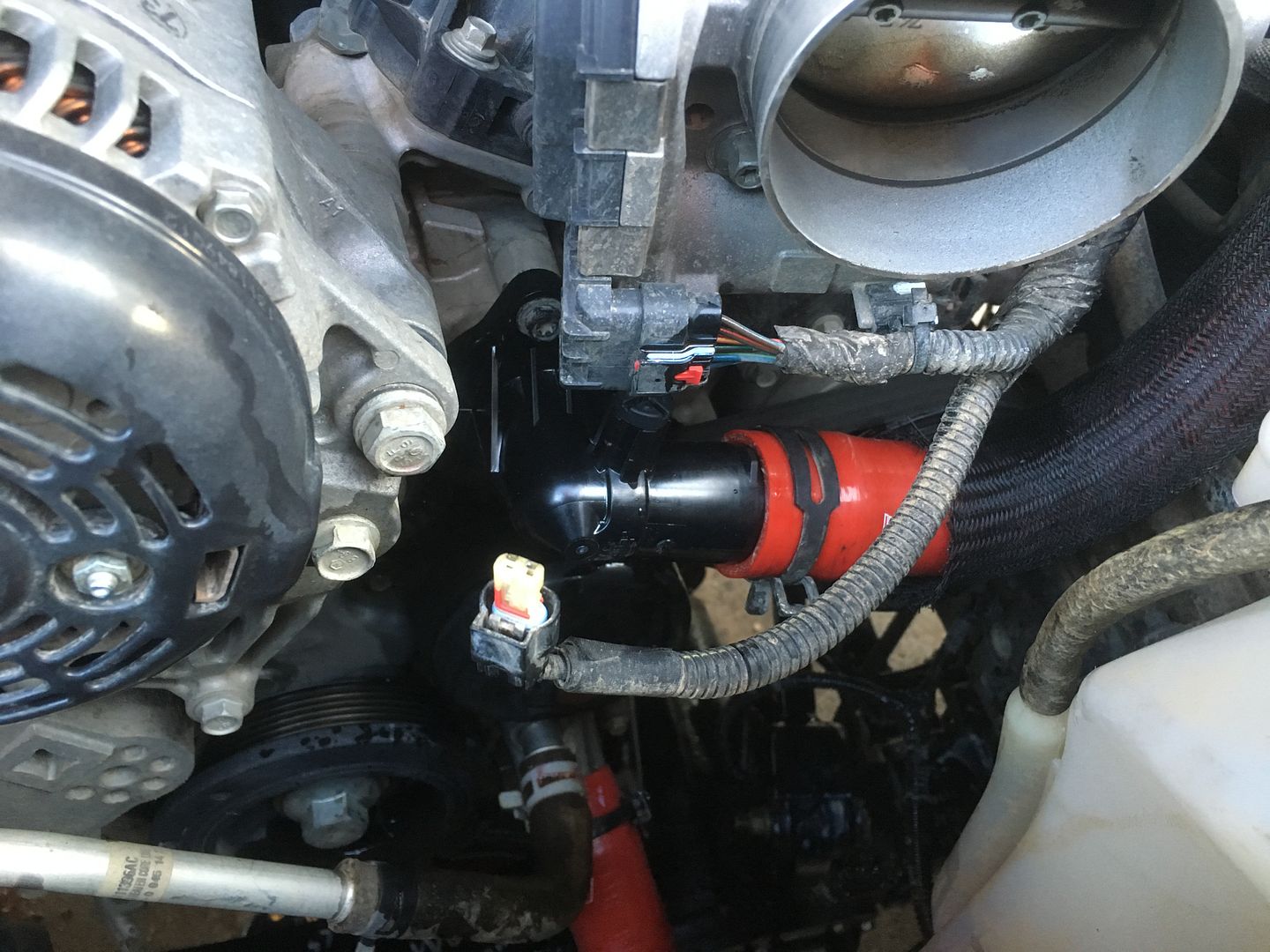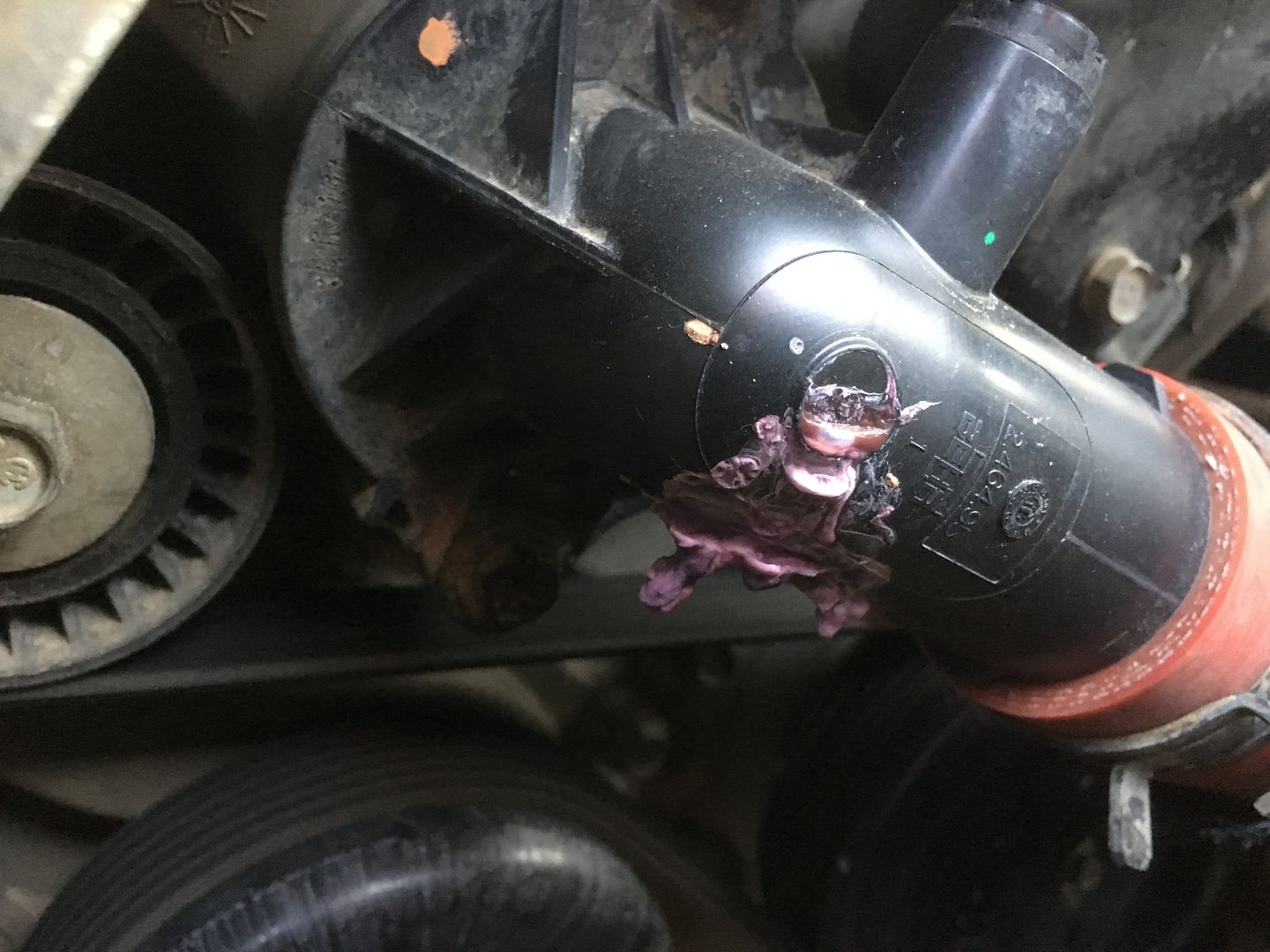Based on the threads I've read, does this sum it up:
- remove tube to throttle body and remove grill
- remove tube to thermostat, catch coolant under Jeep
- swap thermostat housing
- connect hose to thermostat housing
- remove bleeder valve on new housing
- pour new coolant into the radiator and watch for bubbles to disappear in stream visible at bleeder valve
- replace and tighten bleeder valve
- top off coolant in overflow
- turn engine on with no A/C and wait for fan to kick on
Any other tips or does this sum it up? It looks like a tight fit in there even when removing the tube to throttle body...any other thoughts?
- remove tube to throttle body and remove grill
- remove tube to thermostat, catch coolant under Jeep
- swap thermostat housing
- connect hose to thermostat housing
- remove bleeder valve on new housing
- pour new coolant into the radiator and watch for bubbles to disappear in stream visible at bleeder valve
- replace and tighten bleeder valve
- top off coolant in overflow
- turn engine on with no A/C and wait for fan to kick on
Any other tips or does this sum it up? It looks like a tight fit in there even when removing the tube to throttle body...any other thoughts?










